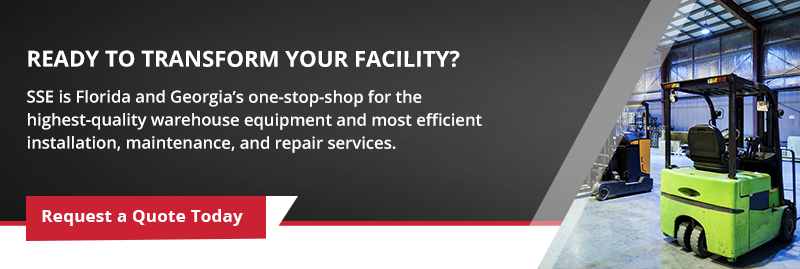If you’ve optimized your preventative maintenance program (see our recent blog, The 3 Steps to Optimize Preventative Maintenance), congratulations! That means you’ve cut costs -- an increasingly difficult task these days -- while increasing uptime.
And if your operations are relatively small, you’ve reached your end goal. Preventative maintenance is probably enough to keep your facility running like a well-oiled machine.
But if you're running hard--perhaps 20 or more multi-shift trucks--you’re a candidate for the next step: predictive maintenance. It is able to push limits because it layers artificial intelligence (AI) on top of all the power of preventative maintenance.
If you’re charged with keeping up with the Amazons of this world, you’ll need to understand and implement predictive maintenance in order to meet your objective. So, what do you need to know to establish a successful predictive maintenance program?
The 4 Steps to Predictive Maintenance
1. Digital collection of the preventative maintenance data - If you’ve already optimized your preventative maintenance, you’ll have almost everything you need in place already. You may need a few tweaks here and there, but you’ll be building on a strong foundation.
2. A finely tuned repair system - You can only build a strong predictive maintenance system if you have a smoothly operating repair system based on repair orders and parts. As we mentioned in our preventative maintenance blog, techs will have to have adjusted their mindset so they’re spending the majority of their time preventing issues instead of fixing them. This sounds easy, but generally requires a significant shift in the way techs view their job.
3. Telematics data collection - Telematics, a term that’s a mashup of “telecommunications” (aka remote means of communication) and “informatics” (aka information processing), is crucial for predictive maintenance success. That’s because the system gathers data using a combination of technology, sensors, and diagnostic codes. The technology is managed on software platforms that help fleet owners manage their assets remotely, including running a maintenance program. As a note, this means you need technicians who are comfortable with data systems, which means training and education.
4. An artificial intelligence decision data decisioning system - Here’s where the AI part comes in to govern the “predictive” part of maintenance. This system leverages all the other elements you’ve put in place and strengthens your PM program over time.
If this all feels overwhelming, you’re not wrong. Moving to the next level in material handling is challenging for even companies with bountiful resources. This is true whether you’re trying to optimize preventative maintenance or move to the next level with predictive maintenance!
If you want to short circuit this process, you have three options:
1. You can leverage a partner to bring in an on-site maintenance team. This must include an on-site data platform and service process franchise that drives PMs and corrective actions, which will move you further toward predictive maintenance.
2. You can start small and expand with a pilot program. This process won’t happen overnight, but you can run a small program at one facility or simply test a single type of equipment at one location. To do this effectively, decide what you want to measure, determine the type of sensor that’s needed, create the monitoring system, and collect and analyze the data. You can see what your techs struggle with before you try to roll it out on a larger basis--and that way, you can prepare more effectively. We’ve seen this firsthand, since we’ve helped many facilities roll out smaller-scale test plans to work out the kinks before further expansion.
3. Roll out a third-party telematics offering. If you have the resources, you can buy this from a company and use your internal resources to run it. Be aware that, while this is an obvious budget commitment, it will likely also involve a great deal of training and, potentially, new hires with engineering knowledge. We’ve seen organizations build out a great set of dashboards, take ownership of the system and drive productivity, safety and cost improvements. However, for most organizations, within the first year or two of implementation, big data reporting became more of a hassle than a help, or they transitioned to a lighter lift telematics approach: just utilizing the tool to driving OSHA checklist, operator swipe, and impacts--high-value activities in and of themselves!
If you want your material handling program to be world-class, it’s most likely a multistep process. At the very least, it’s going to take significant forethought and planning to successfully move to predictive maintenance. That’s why, if you’re a high-velocity facility, you should be thinking about your long-term plans now, because every decision you make can affect your success down the road.
Content originally published on ConcentricUSA.com. Southern States Enterprises is now a Concentric LLC. Company.







